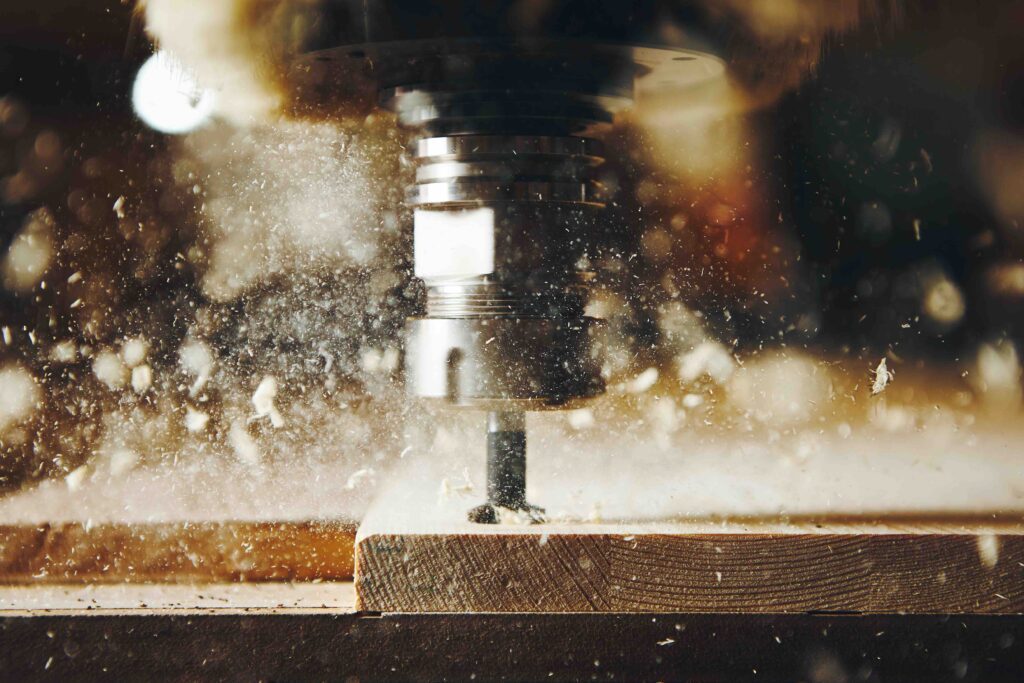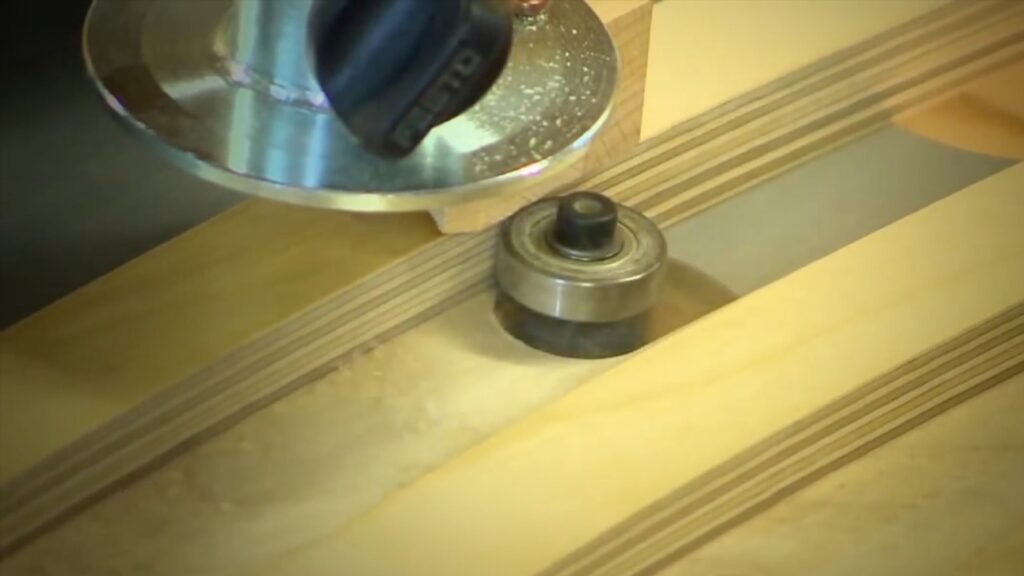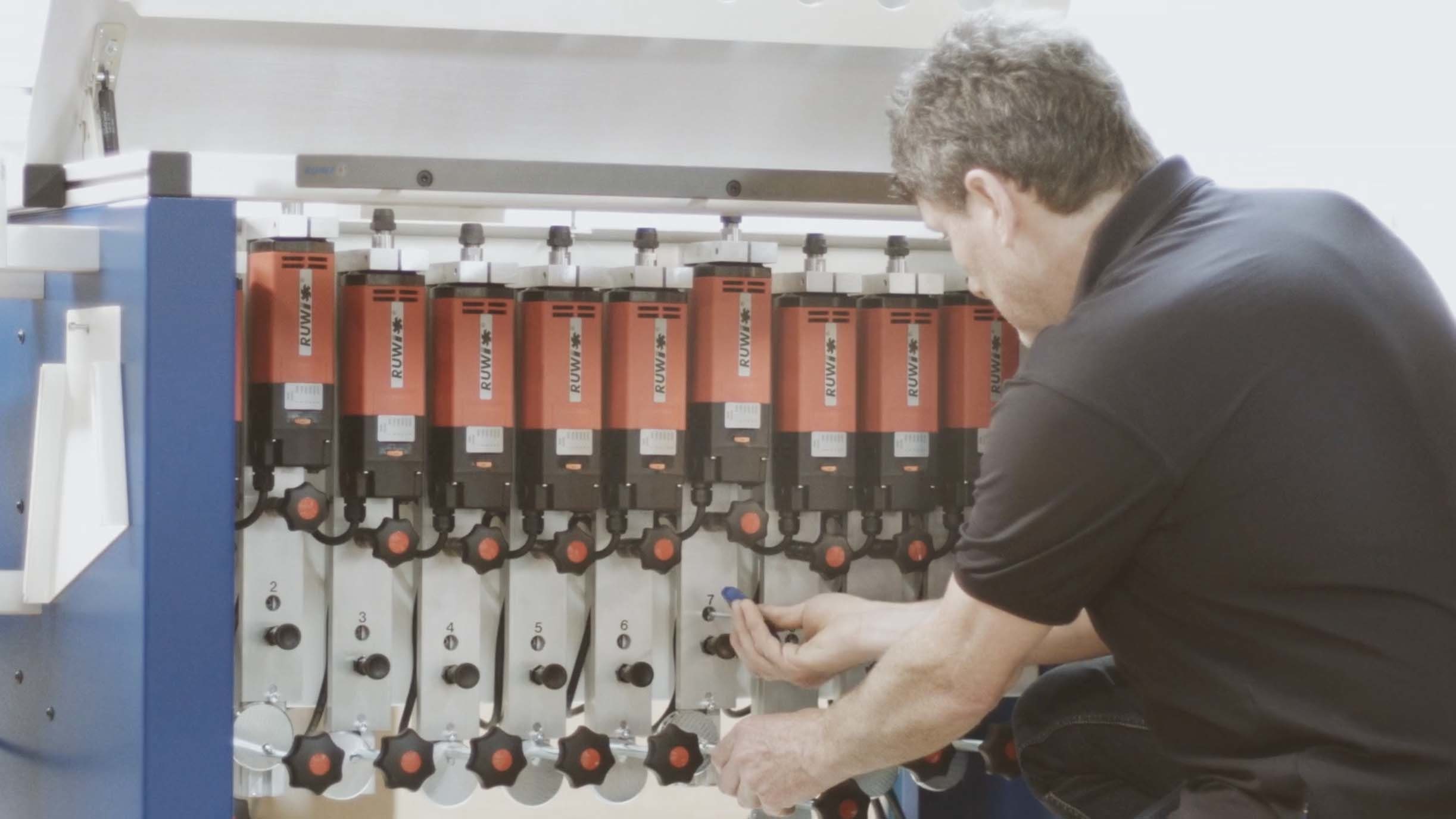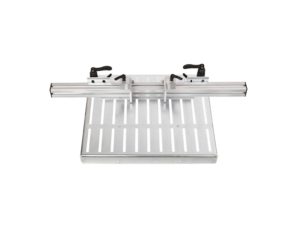CNC milling
Definition and explanation of CNC milling in woodworking
Milling is a shaping, machining process. In addition to turning and grinding, it is the usual milling process for manufacturing wooden products. CNC milling is used to produce freeforms with repeatable, computer-controlled precision. A distinction is made between 2D and 3D CNC milling.

In this article you will learn the most important information about CNC milling. You can also read everything there is to know about machinable materials and where CNC milling is used.
Table of contents
Meaning: What is CNC Milling?
CNC milling is the processing of millable materials on a CNC machine. CNC means “Computer Numerical Control”. The milling process is characterized by efficient working methods and repeatable precision.
Technical basics of CNC milling in woodworking
Milling is used in wood technology to process edges, to produce contours in panels and to shape any geometries from blocks. With a CNC milling machine, these processing steps are carried out with repeat accuracy by an electronic control and electromechanically driven feeds. This saves personnel and time.
The simplest form of milling is edge processing. A wooden panel, board or slat is guided past a stationary milling head. The milling head is interchangeable. Its geometry dictates the shape in which the edge is worked out.
Contour milling for panels has a 2D coordinate guide. The milling head is located on this guide. It dips into the wooden panel at the defined point and follows the programmed contour. The result is a flat material with an outer edge of any shape.
Free-form milling mostly works with a robotic arm. The soft wood material and the relatively large tolerances make it possible to use these coordinate guides, which are usually not sufficiently rigid for metalworking. The milling head is located in a spindle at the top of the robot arm. CNC programming makes it possible to carry out repeatable, precise series production, even with complex 3D machining of the workpiece.
Variants of CNC milling in woodworking
edge processing
The simplest form of milling is edge processing. A wooden panel, board or slat is guided past a stationary milling head. The milling head is interchangeable. Its geometry dictates the shape in which the edge is worked out.
CNC face milling
CNC face milling is an alternative machining method to dressing. The milling cutter moves in overlapping paths over the entire surface of the workpiece. The workpiece is then turned over and the process repeated. This is how you transform a sawn blank into a shaped piece with a defined thickness.
contour milling
Contour milling for panels has a 2D coordinate guide. The milling head is located on this guide. It dips into the wooden panel at the defined point and follows the programmed contour. The result is a flat material with an outer edge of any shape.
free-form milling
Free-form milling mostly works with a robotic arm. The soft wood material and the relatively large tolerances make it possible to use these coordinate guides, which are usually not sufficiently rigid for metalworking. The milling head is located in a spindle at the top of the robot arm. CNC programming makes it possible to carry out repeatable, precise series production, even with complex 3D machining of the workpiece.

Empfehlung: RUWI Frästisch für CNC-Fräsen mit Holz
Fasen, nuten, runden, schleifen, entgraten, bündigfräsen – mit dem RUWI Frästisch (einer mobilen Tischfräsmaschine) ein halbstationäres System im Bereich der Holzbearbeitungsmaschinen, das präzise Fräsarbeiten an einem stabilen Arbeitstisch und höchste Flexibilität gleichermaßen ermöglicht.
Jetzt mehr erfahren und informieren: RUWI Frästisch
What materials are used in CNC wood milling
Materials for CNC wood milling are all soft, machinable materials. In addition to the various pulps, woods and wood composite materials, plastics such as CFRP or GRP are also among the materials that can be machined on wood milling machines. However, metals cannot be sensibly formed on these machines. The wear on tools and the mechanics is too great with this stress. Conversely, wood-based materials can be machined on metal milling machines without any problems.
- hardwood (e.g. oak, beech)
- Softwood (e.g. pine, spruce, larch)
- chipboard
- plywood
- Multiplex
- MDF
Fields of application of CNC wood milling machines
CNC wood milling machines are used to shape edges, panels or blocks from machinable material.
Milling inner and outer contours
Inner and outer contours are milled out on 2D milling machines. They are cheaper and more precise than 3D milling.

nesting
Nesting is the elaboration of complete components from a semi-finished panel. 2D CNC milling is a particularly efficient tool for this. Before nesting, the panels were reworked into the desired component in several work steps. With the nesting process, all components with all contours, bores and recesses are manufactured in one operation.
Drill
Drilling is the setting of blind, oblong and through holes in a workpiece.
free-form milling
Free-form milling is the 3D processing of a block with any contours.
Industries CNC milling
CNC milling has established itself industrially. They require little manual knowledge. Its programming can be learned quickly. In individual production, they promise fast and precise results. Their largest is series production. A CNC milling machine can produce any number of the same workpieces.
The following industries work successfully with CNC milling machines:
- Professional carpenters and carpenters
- Manufacturers of furniture, windows, doors and wooden components
- Caravans and mobile homes
- boat building
- model making and mold making
Which workpieces can be made of wood with a CNC milling machine?
The workpieces that can be produced depend on whether they are flat or block material. Flat materials are processed on 2D CNC milling machines. The 3-D CNC milling machine is used to process block material.
- furniture fronts
- body parts
- 3D wooden models
- countertops
- Letters
- Milled wood parts, drilled parts
- wood engravings
- wooden front doors
- wooden models
- wooden toy
- Furniture: cupboards…
- stair steps, stairs
- Window
- fences
Requirements: Axes determine the complexity of a workpiece
A 2-D milling machine is used for processing panel materials. Nevertheless, it can also work in depth to a certain extent. This is necessary, for example, when blind holes have to be drilled. A 3-D milling machine with a robot arm, on the other hand, can operate up to 5 axes. This enables precise shaping in every direction, precision and complexity.
tool changer
The tool changer greatly increases the efficiency and capacity of a CNC router. This device serves to provide the milling head with the right tool at the right moment. The tool is exchanged automatically with the changer and is programmed with the CNC control. The following types are used for the tool changer:
- Pick up changer for a few tools
- Disk changer for a medium number of tools
- Chain changer for many milling tools.
machine tables
The efficiency of a CNC milling machine also depends on the machine table used. Which type is suitable for this also depends on the forces at work. For example, a vacuum table cannot generate the necessary holding force to fix a block of wood with a narrow contact surface for 3D processing. This requires clamping tables. The following types of machine tables have therefore become established in woodworking:
- console table
- Grid table or matrix table
- Flat table systems
Console tables are used for plate processing in the trade. They usually work with vacuum cups that are mounted on movable consoles.
Grid tables and matrix tables work according to a similar system. The vacuum area is sealed against the workpiece by inserting a foam rubber cord. This type of machine tables is mainly used in industry.
Flat table systems are used for 2D and 3D processing. They mainly work with clamping devices.
Advantages: Milling wood with the CNC router
Woodworking with the CNC milling machine has the following advantages:
- Reproducible, precise processing with low personnel deployment
- high degree of automation
- fast processing
- high occupational safety.
Once programmed, the CNC milling machine executes the same movement sequences over and over again. If loading and unloading are also automated, the CNC milling machine works autonomously. The movements are always optimal. This way no time is wasted. Due to the distance between the milling head and the machine operator, there is no risk of injury. This makes working with the CNC milling machine very safe.
Depending on the type and equipment, a cleaning station and quality control in the form of a 3D coordinate measuring system can also be integrated into a CNC milling machine. This also reduces rejects.
What machines are used for CNC wood milling?
The following types of CNC wood milling machines have proven themselves particularly well:
- CNC machining centers
- CNC portal milling
- Single and double column bed type milling machines
Other milling machines in woodworking are the table milling machine, underfloor milling machine, stationary router, hand milling machine or edge milling machine.



